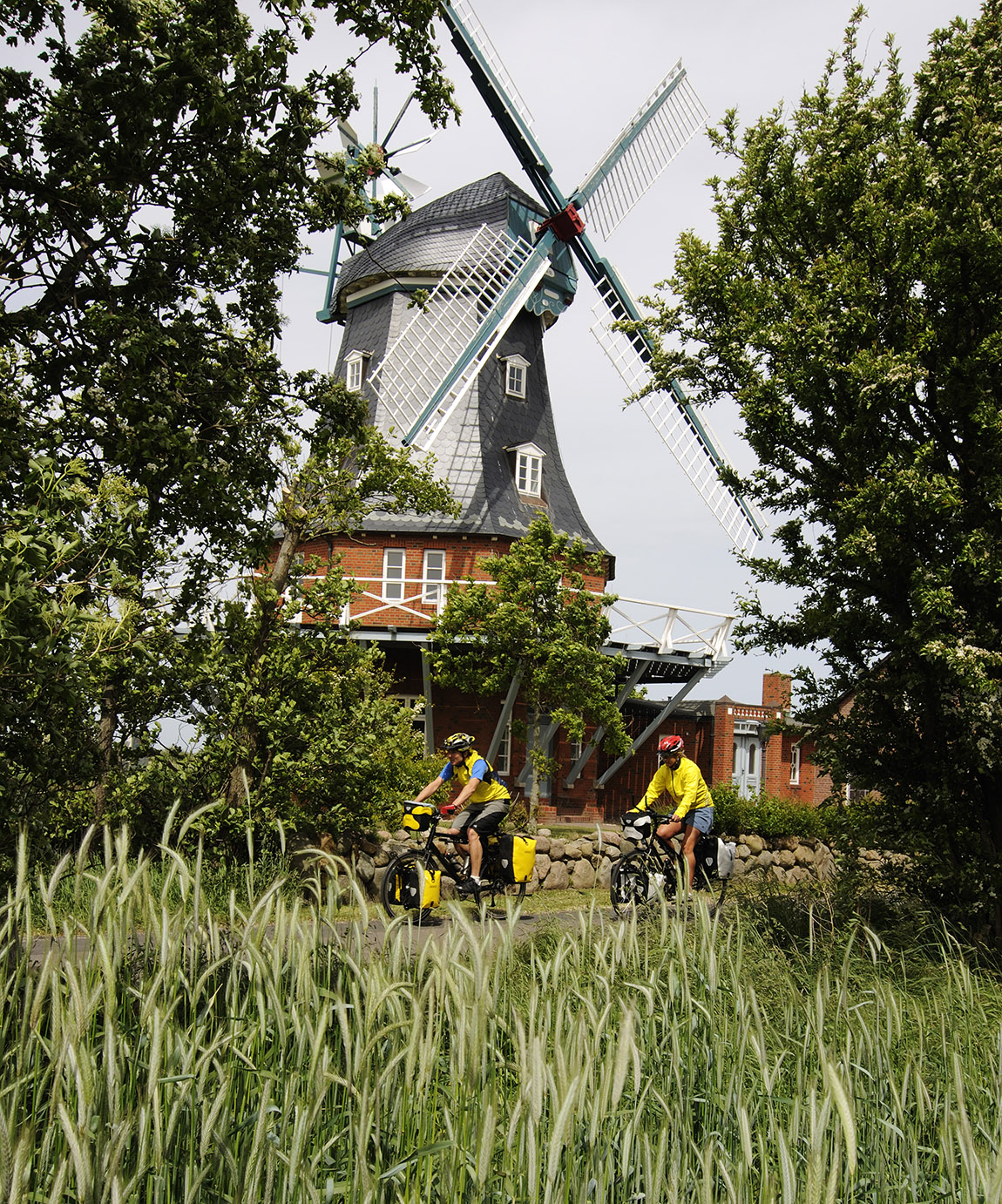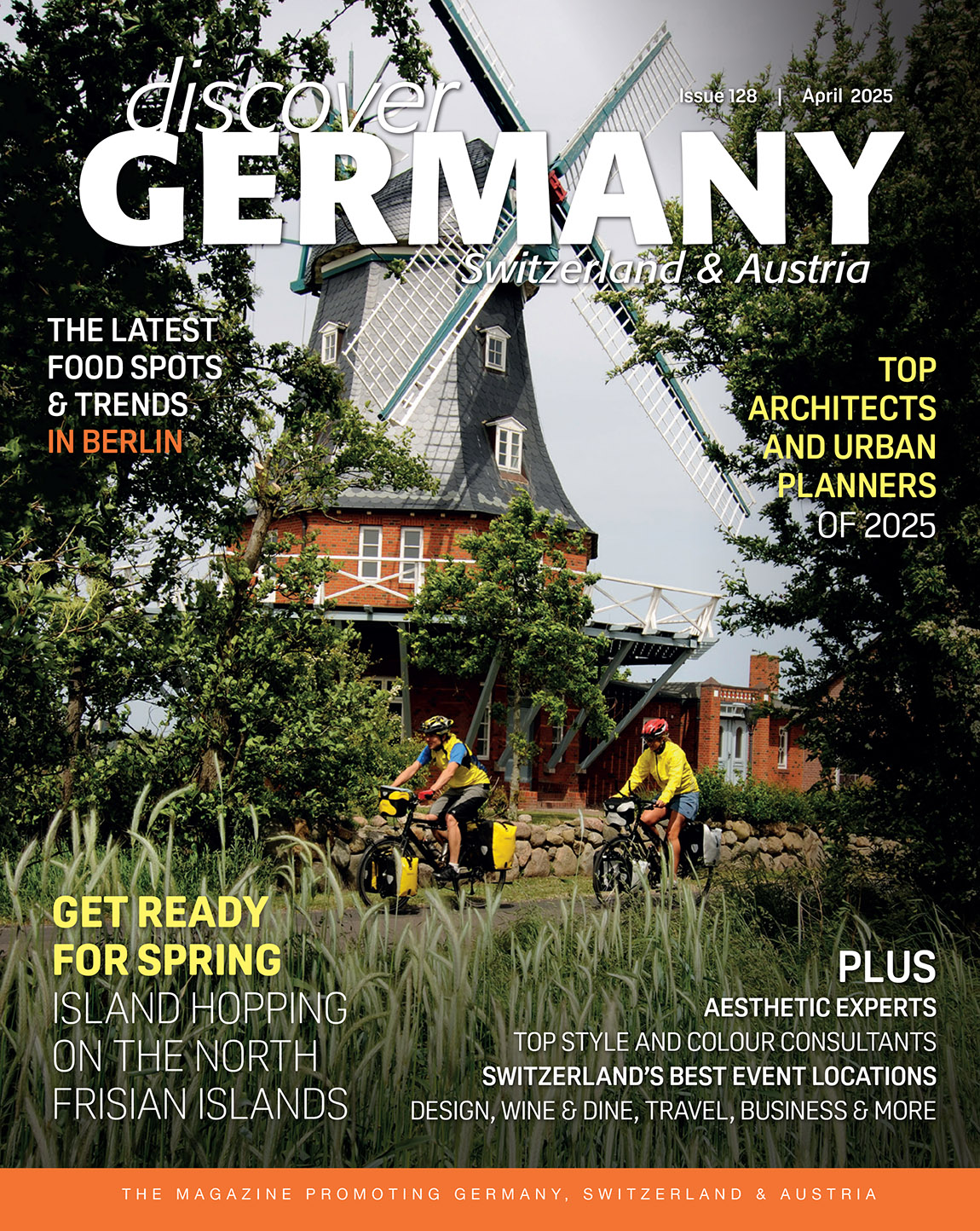TOP FIVE WINE REGIONS ACROSS THE DACH REGION
TEXT: MARILENA STRACKE, NANE STEINHOFF I PHOTOS: PIXABAY

Raise a toast to the picturesque landscapes and exquisite wines of Germany, Austria and Switzerland, as we explore the top five wine regions these countries are world-famous for. Join us on a delicious journey unravelling the viticulture gems of each region, with recommendations for trips and wine tastings.
Want to discover the gems of viticulture across the DACH region? With a perfect blend of old-world charm and modern innovation, some of the most celebrated wines in the world are produced there.
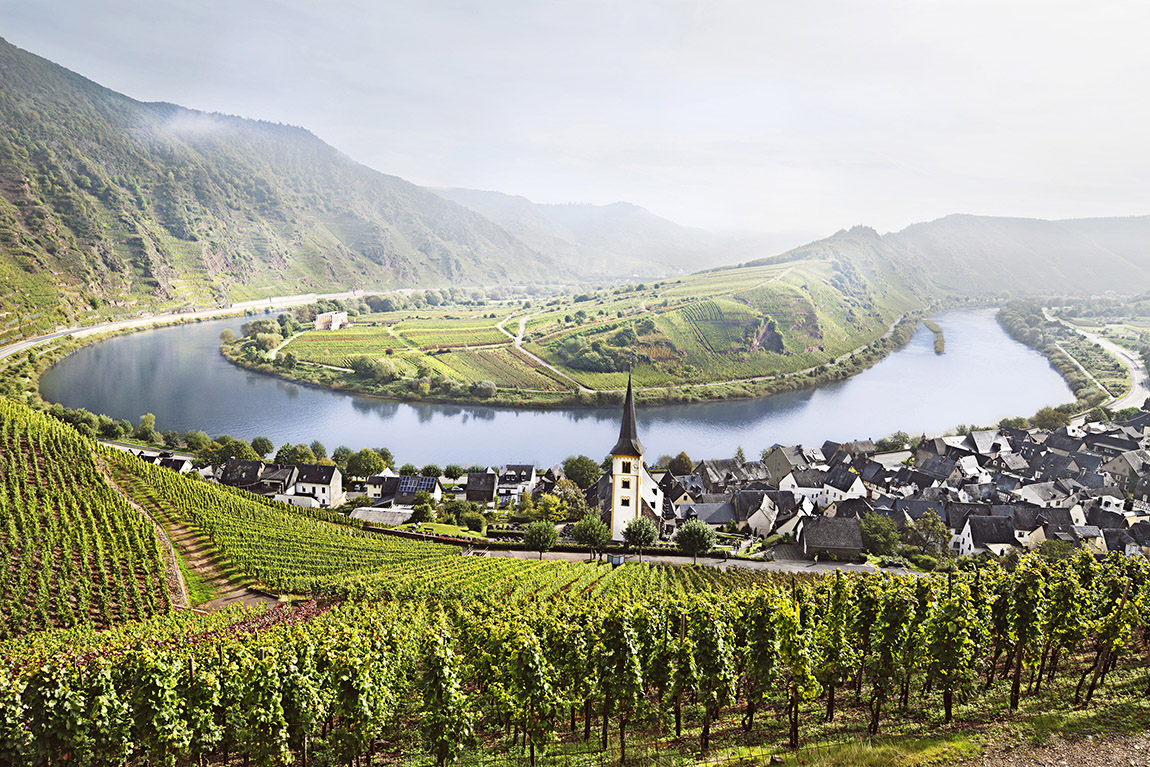
Mosel. Photo: © Deutsches Weininstitut (DWI), www.deutscheweine.de
Germany and Austria are home to numerous prestigious wine-growing regions, each producing high-quality wines from an enormous variety of grapes. The classics, such as Riesling and Pinot varieties (Burgunder), play the biggest role for the countries. Germany is ranked second in the world after only Italy for production of Pinot Gris (known as Grauburgunder), and third for Pinot Noir (Spätburgunder). Climate change in recent years has also led to more international grape varieties making their mark on the German wine landscape, such as Cabernet Sauvignon, Merlot, Syrah, Chardonnay and Sauvignon.
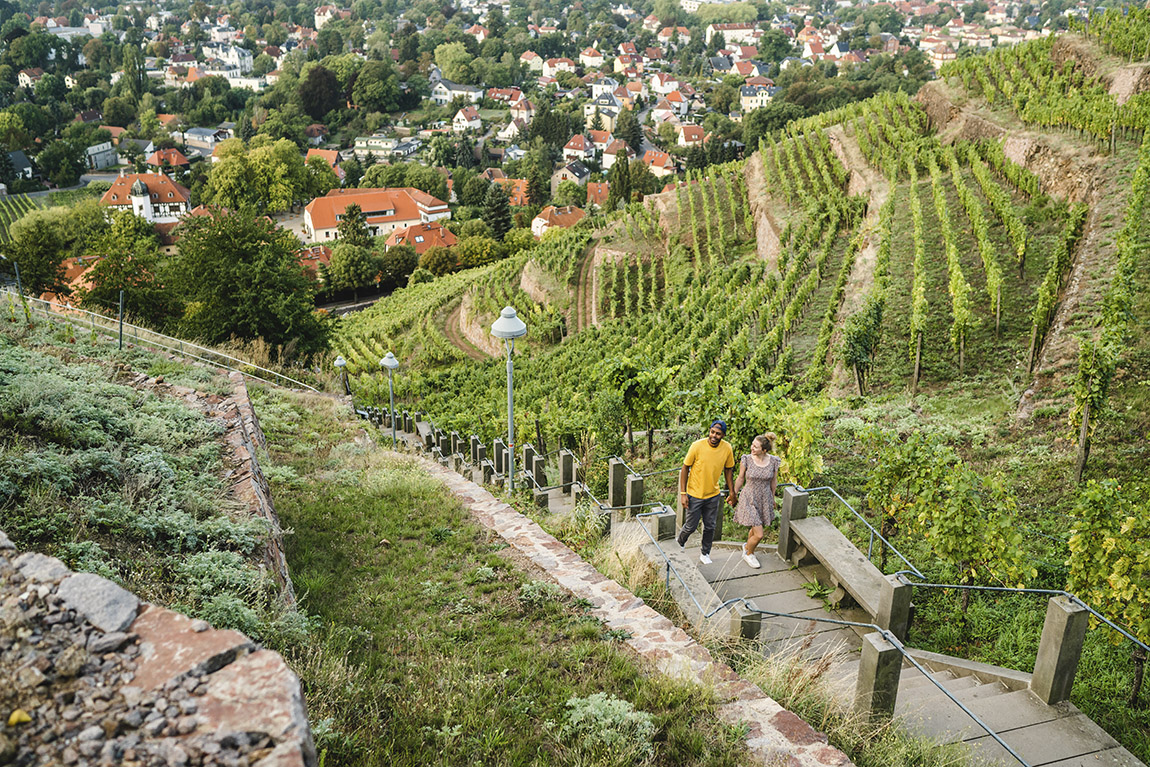
Photo: Deutsches Weininstitut (DWI)
There is an increasing appreciation amongst German wine drinkers for quality, regional specialities and authenticity – which goes hand in hand with the ever-growing trend in the German wine scene to keep the wine as untouched from human interference as possible. In fact, the demand for individual wines, fermented without temperature control, which really capture the intricacies of the terroir and the signature of the winemaker, is very much on the rise. When it comes to eating lighter, German wines are an ideal accompaniment to this trend. As these wines are cultivated in the northern areas of Europe’s wine-growing regions, the grapes’ maturing process is much slower, which enhances their aroma while keeping their alcohol content fairly low.

Photo: Pixabay
Austrian wines are best known around the world for their quality and innovative features. ‘Small is beautiful’ – this motto best describes Austrian wine if you look at it from an international perspective. After all, the small Alpine country produces rare and interesting wines that are sure to please any demanding palate. Austrian wines can be found on every great wine list right now, and more and more wine experts are starting to appreciate them. The country’s long tradition in winemaking plays a big factor, as grapevines have been cultivated here in the same manner for thousands of years. Ideal geological and climatic elements further contribute to the best conditions for making distinctive, tasty and authentic wines with character and personality. It also needs to be noted that Austrian vintners seem to have understood what makes wines great today: combining traditional viticulture with modern processes. The outcomes are diverse, high-quality wines without compromise. Wine connoisseurs can find everything that their heart desires in Austria: from lively, light-bodied wines to opulent white wines, fruity or full-bodied red wines, as well as elegant, sweet wines.
Swiss vineyards cover 14,696 hectares, with more than 2,500 winemakers in six regions: Valais, Vaud, German-speaking Switzerland, Geneva, Ticino and the Three Lakes. The small country is increasingly making a name for itself with its gorgeous wines. Interestingly, wine consumption is high in Switzerland – Swiss people drink around 85 million litres of wine per year and as the national production does not cover this demand, the country heavily relies on wine imports, and rarely exports its tasty wines. All the more reason for a trip to the mountainous country!
Here are our top five destinations across the DACH region – all slightly different, yet equally beautiful.
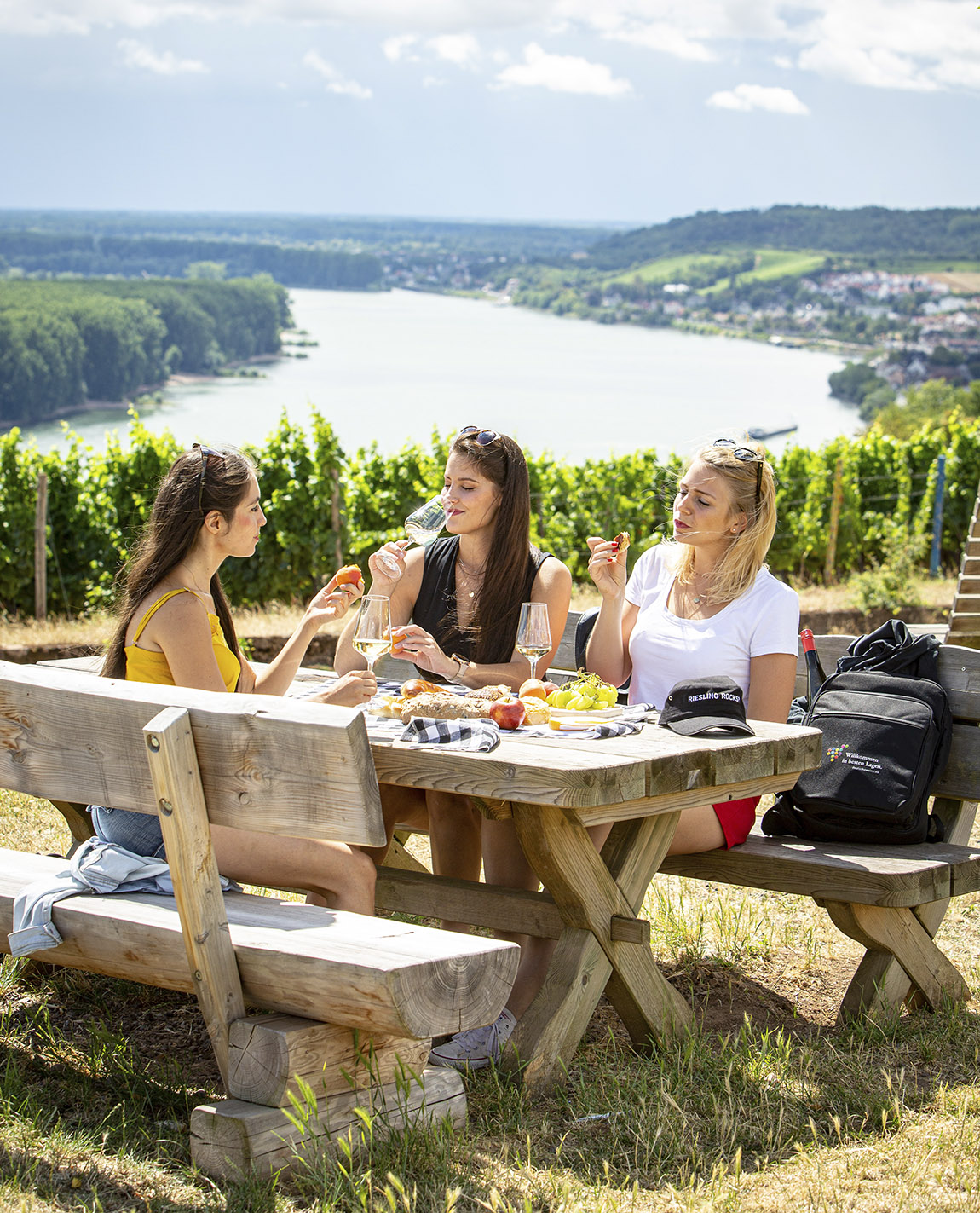
Photo: Deutsches Weininstitut (DWI)
Mosel Valley, Germany
The Mosel Valley, with its steep vine-covered slopes and winding river, is one of Germany’s most renowned wine regions, going back to ancient Roman times. Known for its world-class Rieslings, the Mosel’s unique terroir gives its wines a distinct mineral taste and extraordinary finesse. Visits to the picturesque towns of Bernkastel-Kues, Traben-Trarbach or Cochem, are a must for any wine lover. Wander through the cobblestone streets and explore the charming wine cellars, where you can sample the region’s distinctive wines. For a more urban flair full of Roman history, check out Trier.
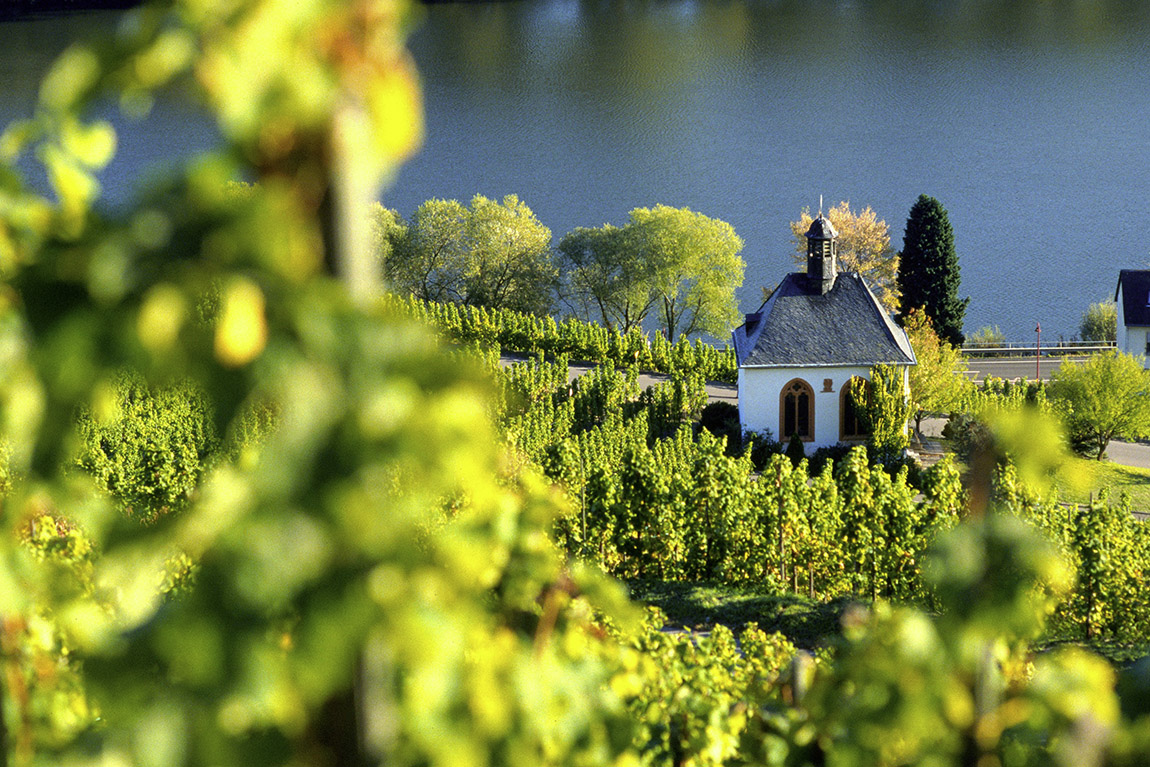
Mosel. Photo: © Deutsches Weininstitut (DWI), www.deutscheweine.de
The Wachau, Austria
Small yet spectacular: The Wachau is the stretch of the Danube valley between Melk and Krems, and classified as a UNESCO World Heritage Site. Think outstanding Veltliner and Riesling, topped with particularly idyllic vineyards and surprisingly dense forests. The quaint historical towns of Dürnstein or Weissenkirchen invite visitors to explore their medieval vibes and vibrant wine culture up close. Many of the region’s wineries date back at least five generations, so this is a place where history meets active viticulture. Indulge in a glass or two while enjoying the stunning views of the Danube and perhaps taste some local ‘Marillenknödel’, a dough-based dish consisting of a Wachau apricot encased in a light dough.
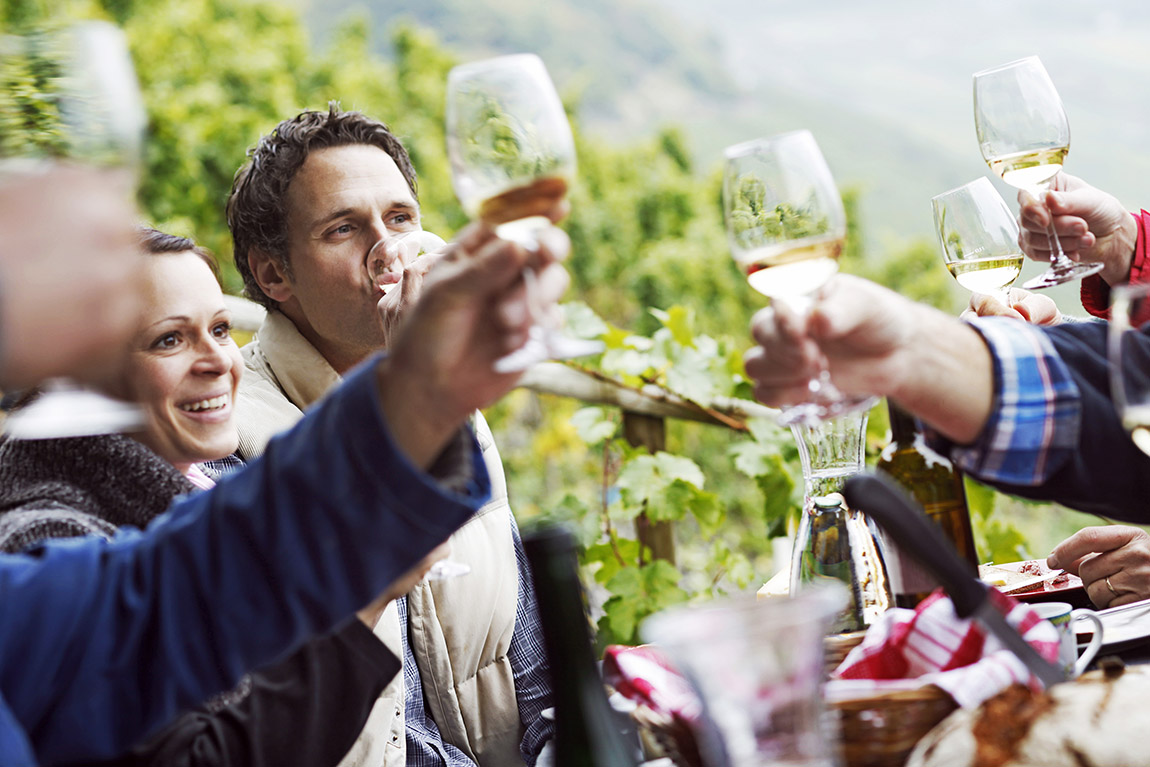
Photo: Deutsches Weininstitut (DWI)
Baden, Germany
Located in the sun-kissed southwestern corner of Germany and close to the Black Forest, Baden is the country’s third-largest and warmest wine region. Particularly well-known is the wine area Kaiserstuhl. With a climate comparable to Burgundy, Baden produces high-quality Pinot Noir (Spätburgunder), Pinot Gris (Grauburgunder) and Pinot Blanc (Weissburgunder) wines. The Baden Wine Route is a popular attraction for wine connoisseurs, as it winds along thousands of hectares of vineyards. Freiburg or Heidelberg are the perfect starting points to explore anything from wine routes to charming vineyards and historic castles.
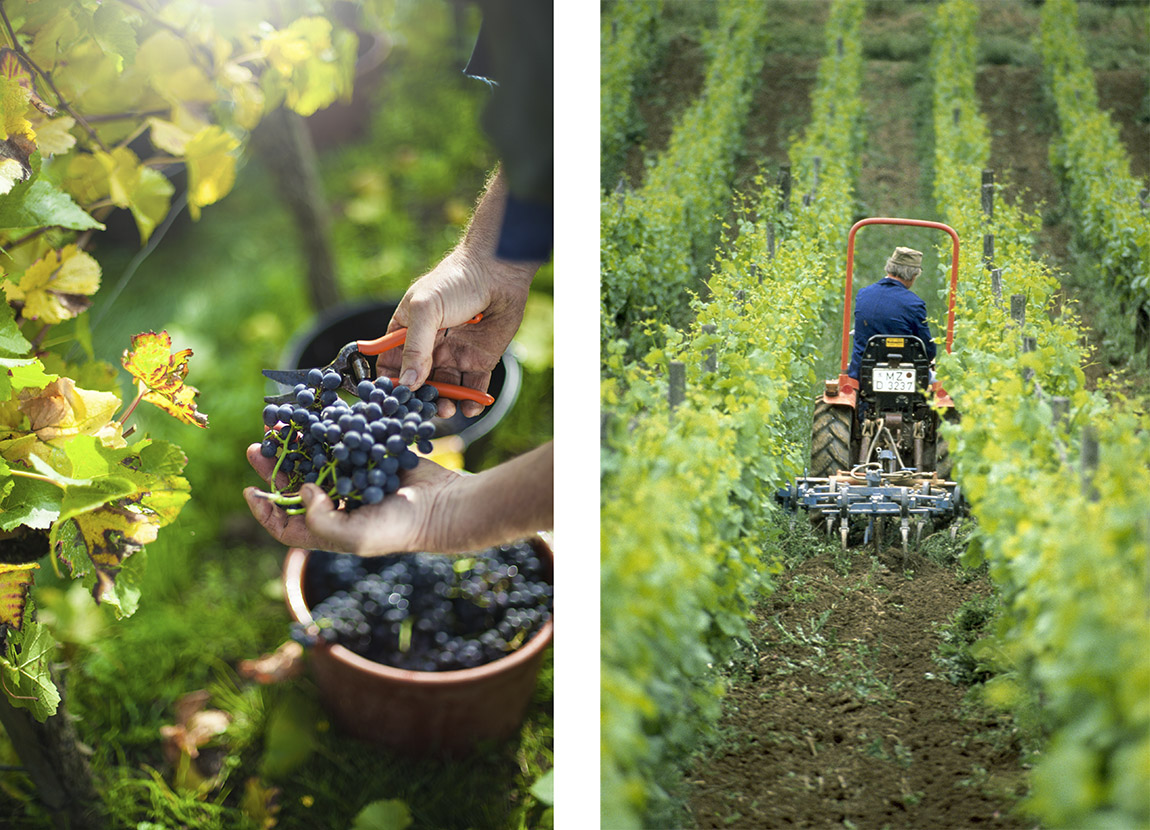
Photos: Deutsches Weininstitut (DWI)
Kamptal, Austria
A neighbour of the Wachau, the Kamptal wine region in Lower Austria derives its name from the Kamp River, which flows through the area. It is a relatively small region, yet it is becoming increasingly prestigious and is located only around 35 miles away from Vienna. The region is particularly famous for its expressive Grüner Veltliner and Riesling wines, which thrive in the loess and primary rock soils. The charming town of Langenlois is potentially the most important wine town in Austria, and offers numerous opportunities for wine enthusiasts to indulge in tastings and accompanying tours.
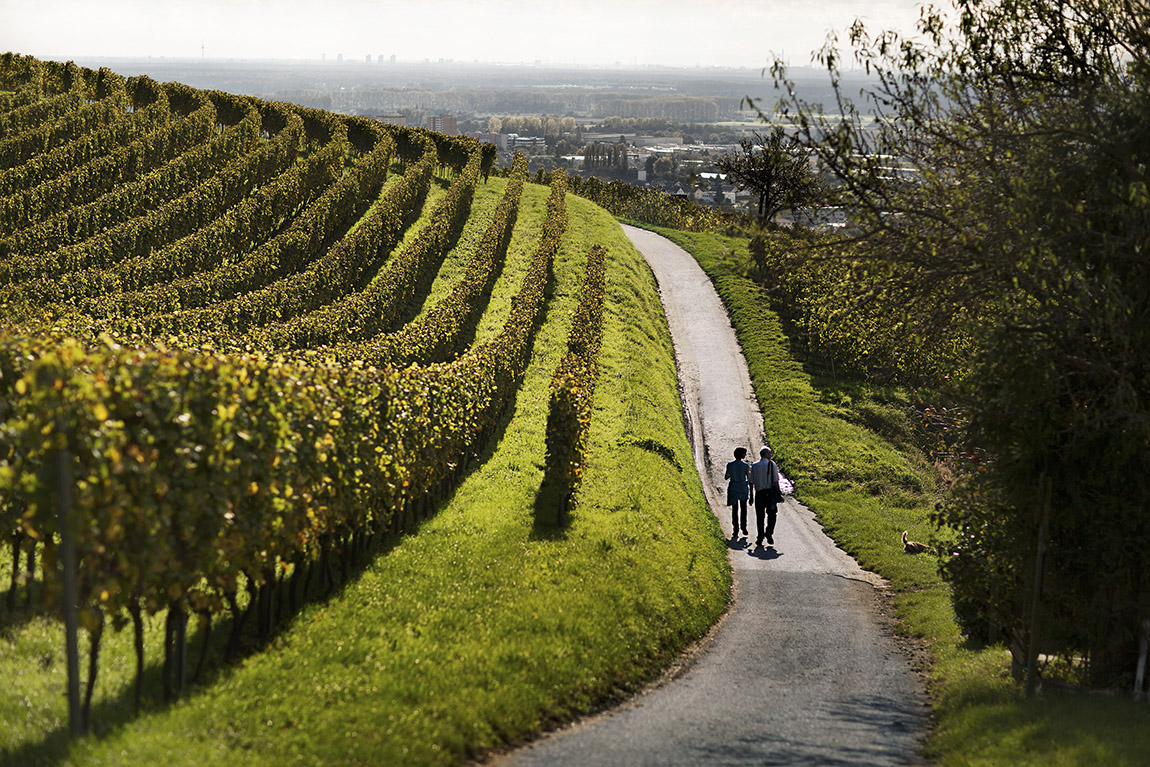
Photo: Deutsches Weininstitut (DWI)
Valais, Switzerland
Nestled in the heart of the Swiss Alps, the Valais region has a breathtaking landscape with vineyards terraced along the steep slopes of the dramatic Rhône Valley. The sunny and dry climate, as well as the diverse range of soil properties, are particularly favourable for viticulture – and you can taste it! No wonder the wine region is the largest in Switzerland and home to more than 50 grape varieties, including complex red, white and grand cru wines. The historic town of Sion, with its medieval castles, is an ideal base for exploring the Valais. Indulge in local treats and pair deliciously cheesy Raclette with a crisp regional white wine.
www.valais.ch/de/aktivitaeten/wein-kulinarik
Regardless of whether you are planning a wine-tasting extravaganza or just fancy a hiking trip across stunning lush landscapes – these regions will leave you speechless either way.
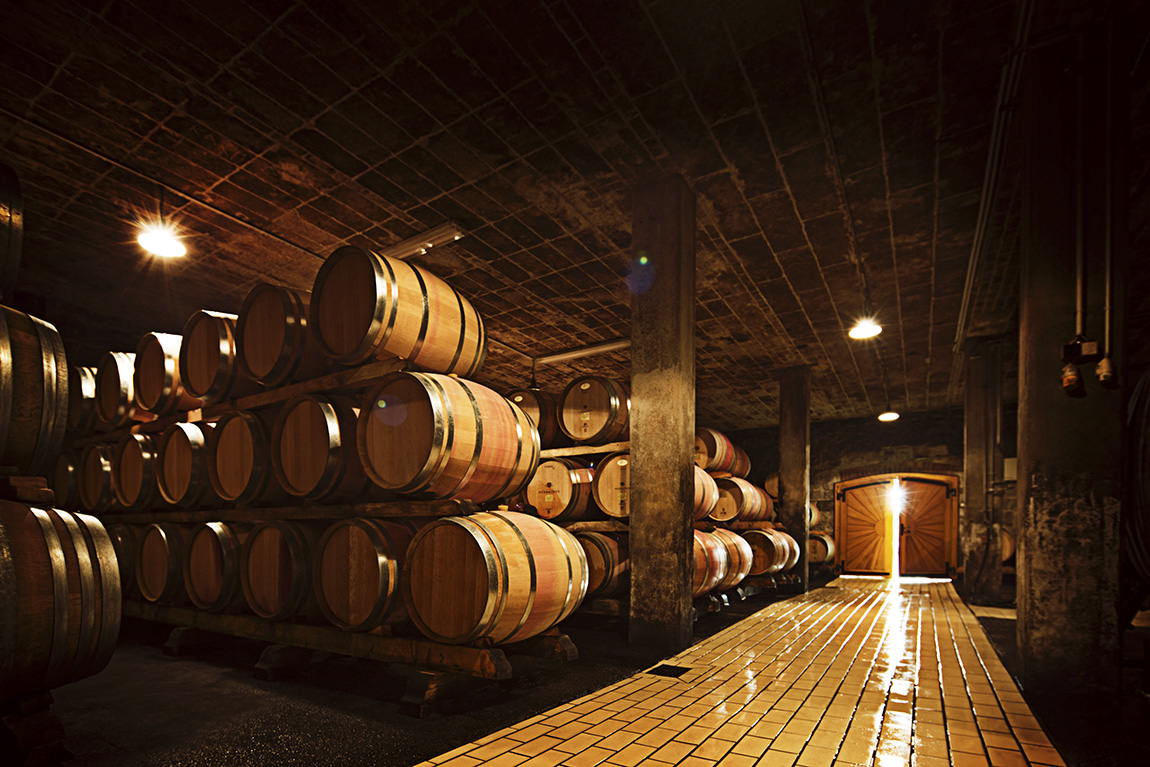
Photo: Deutsches Weininstitut (DWI)
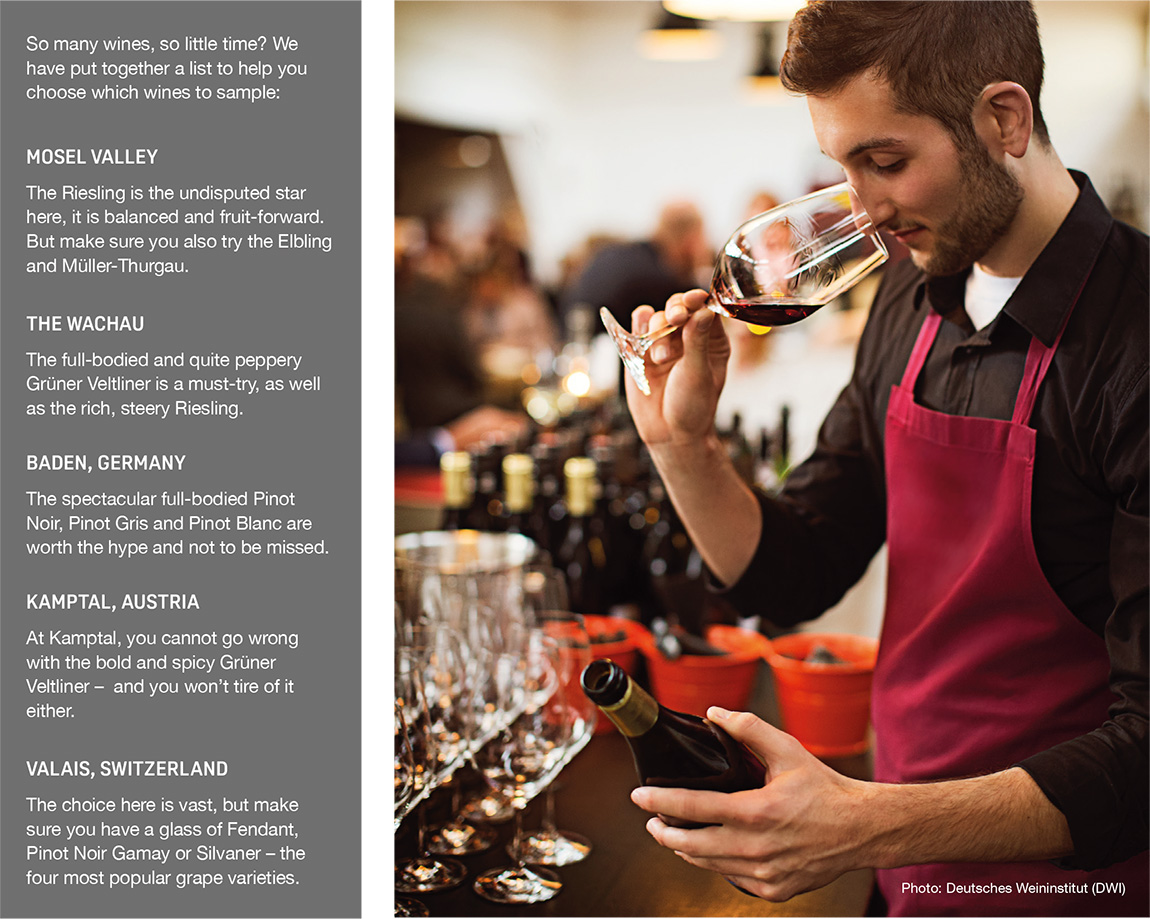
Subscribe to Our Newsletter
Receive our monthly newsletter by email
